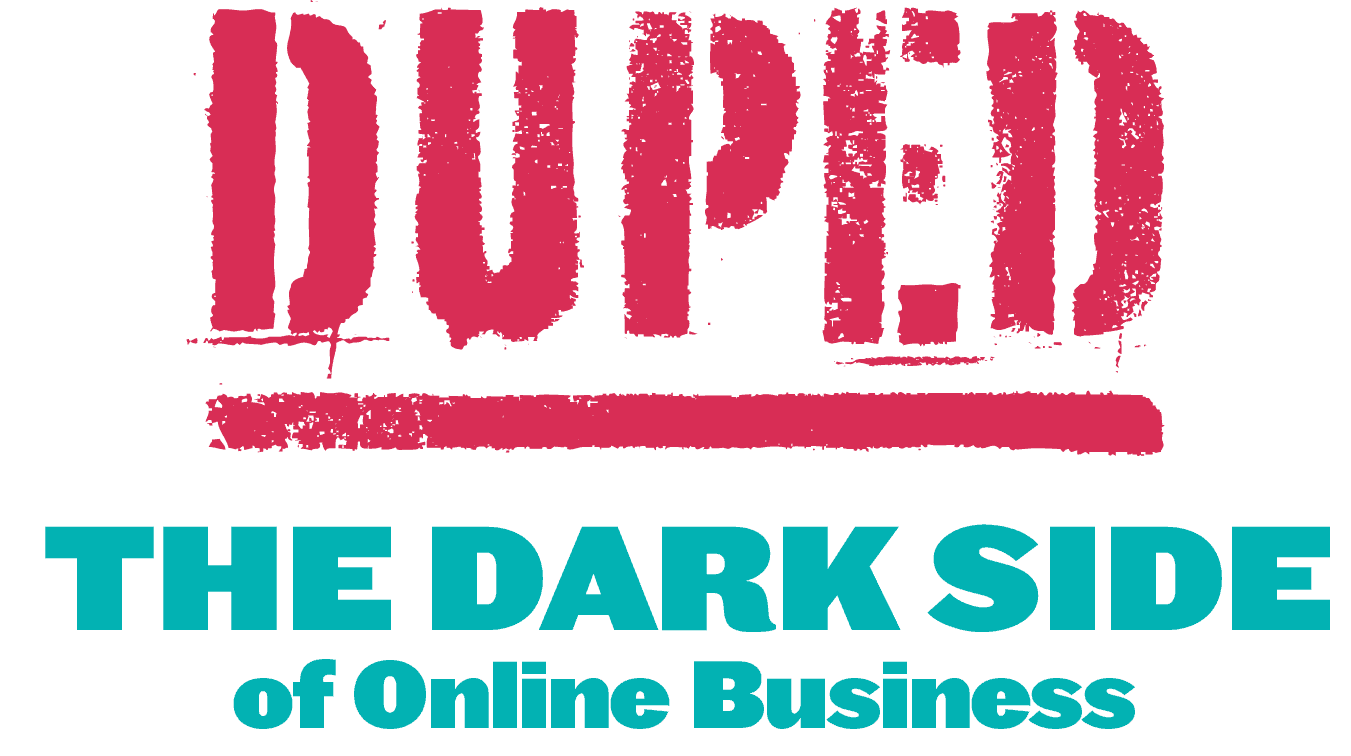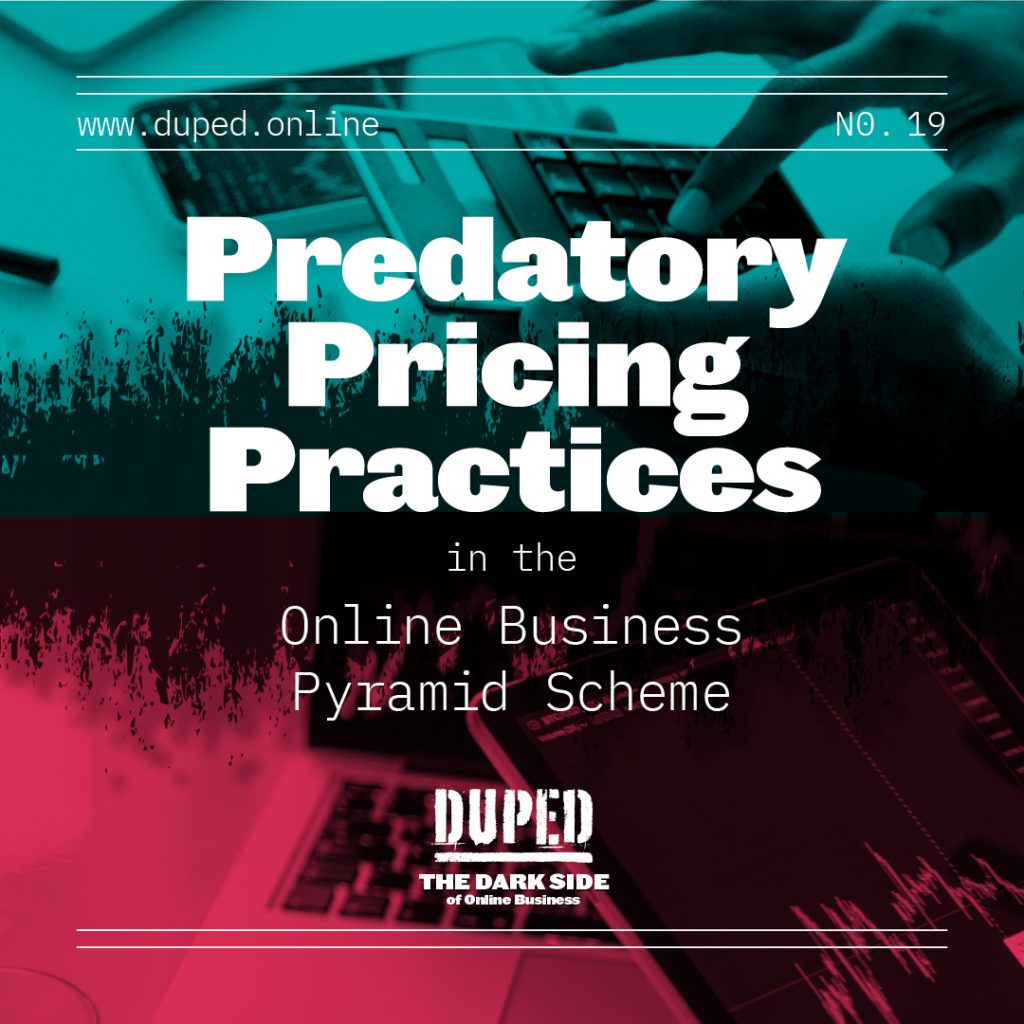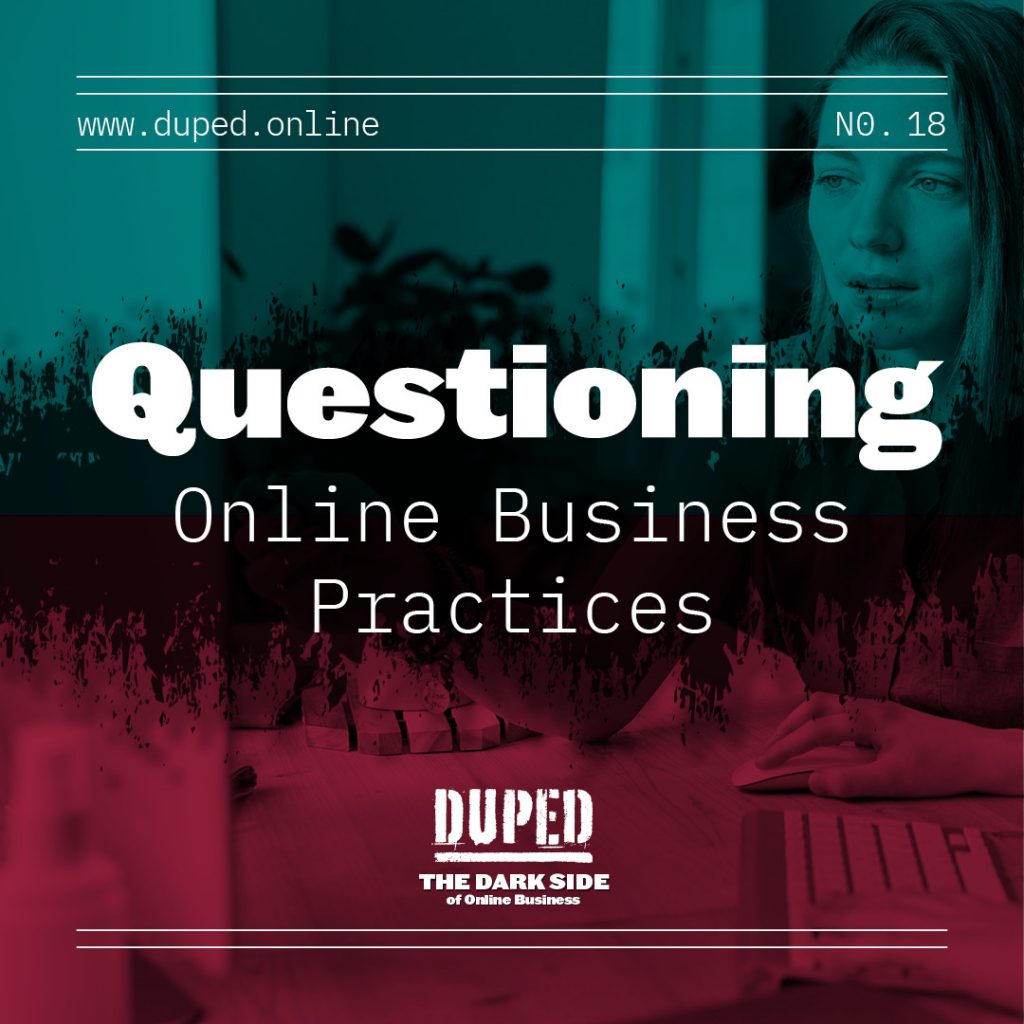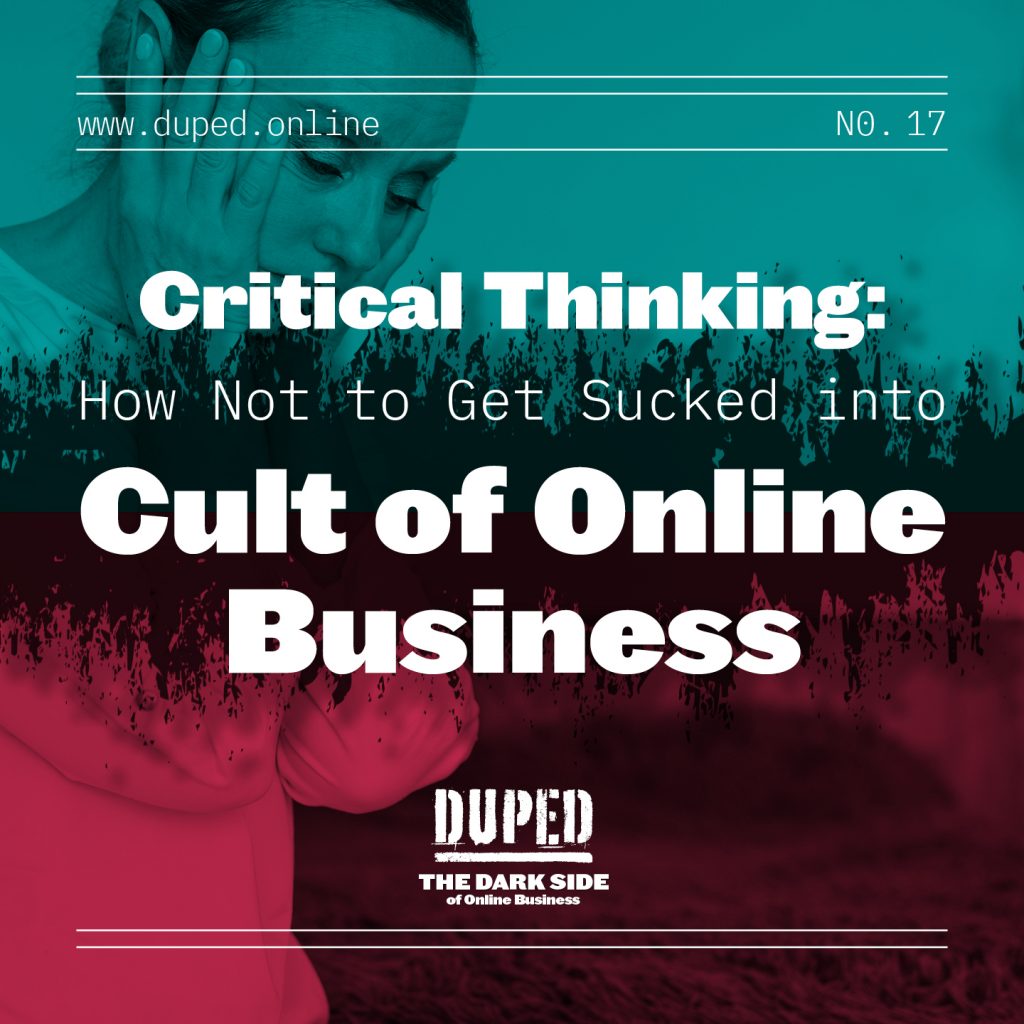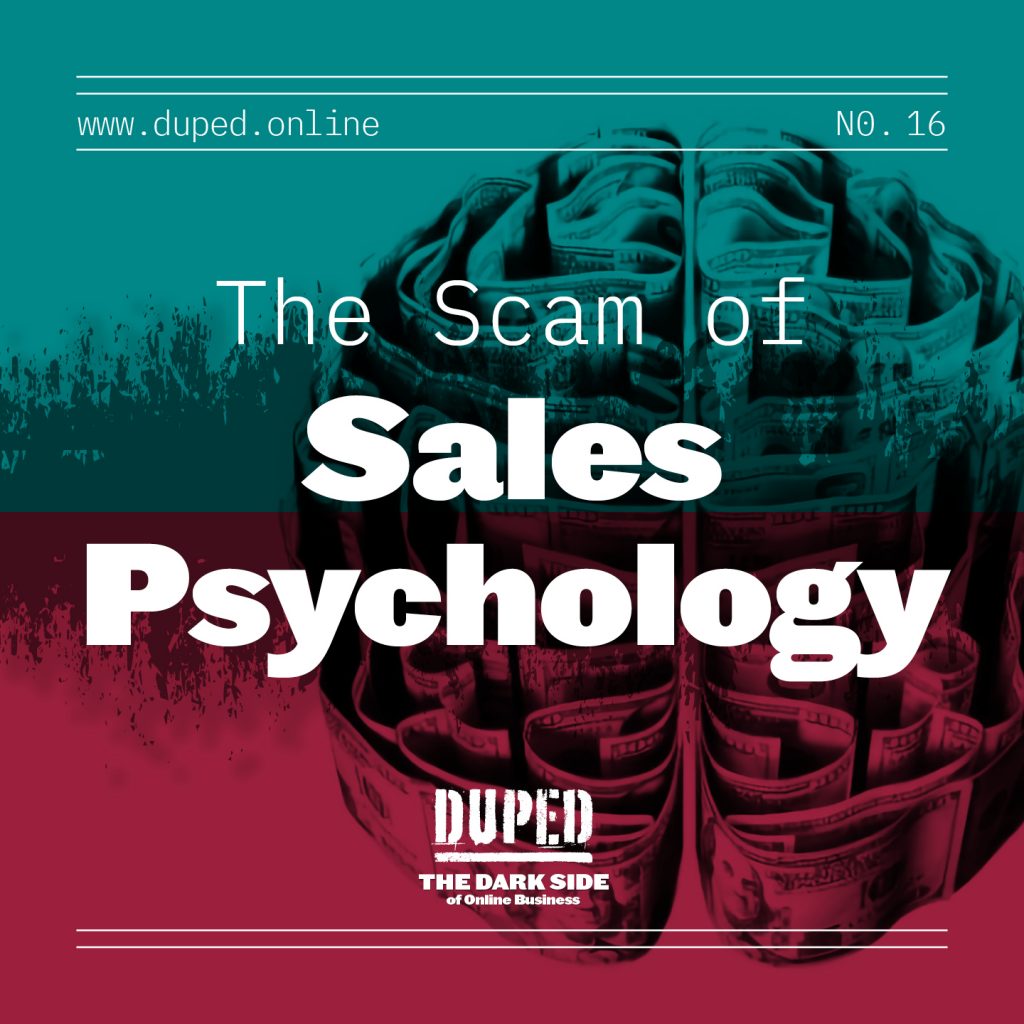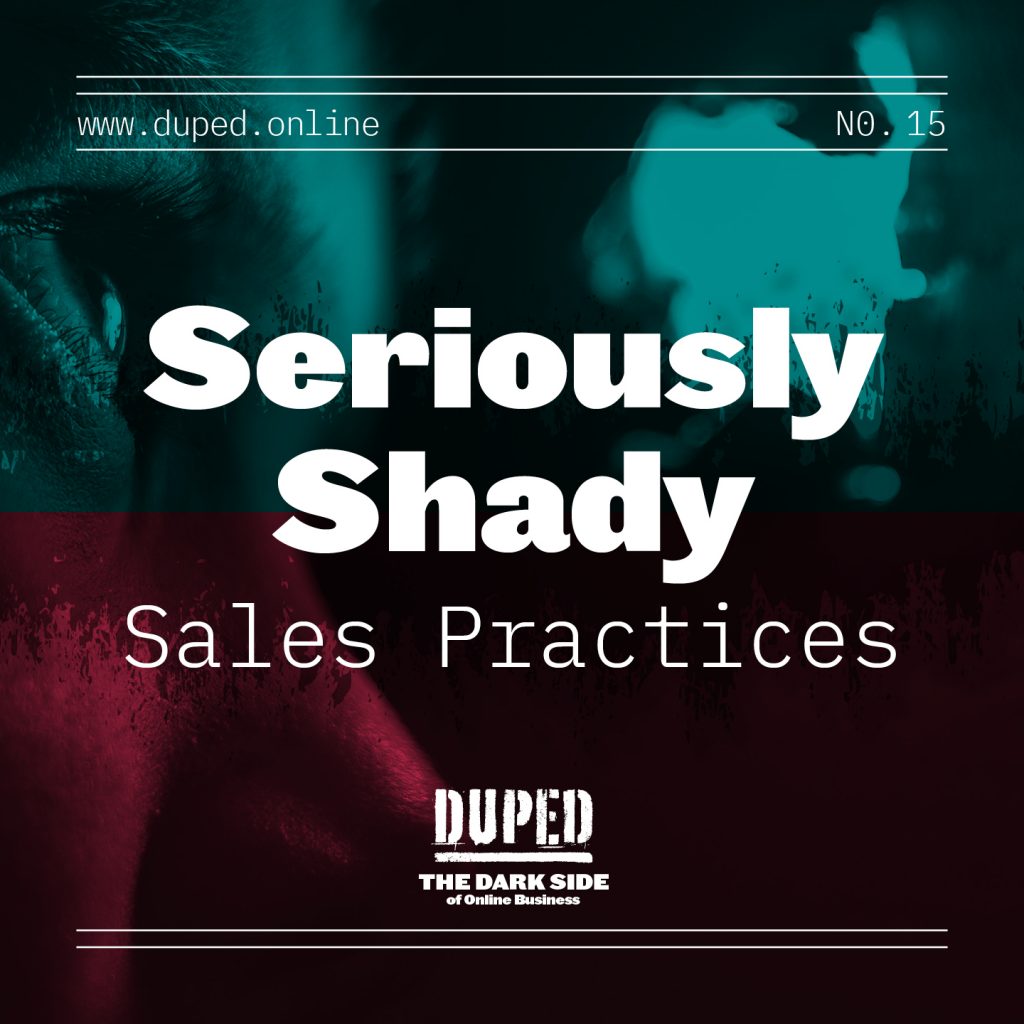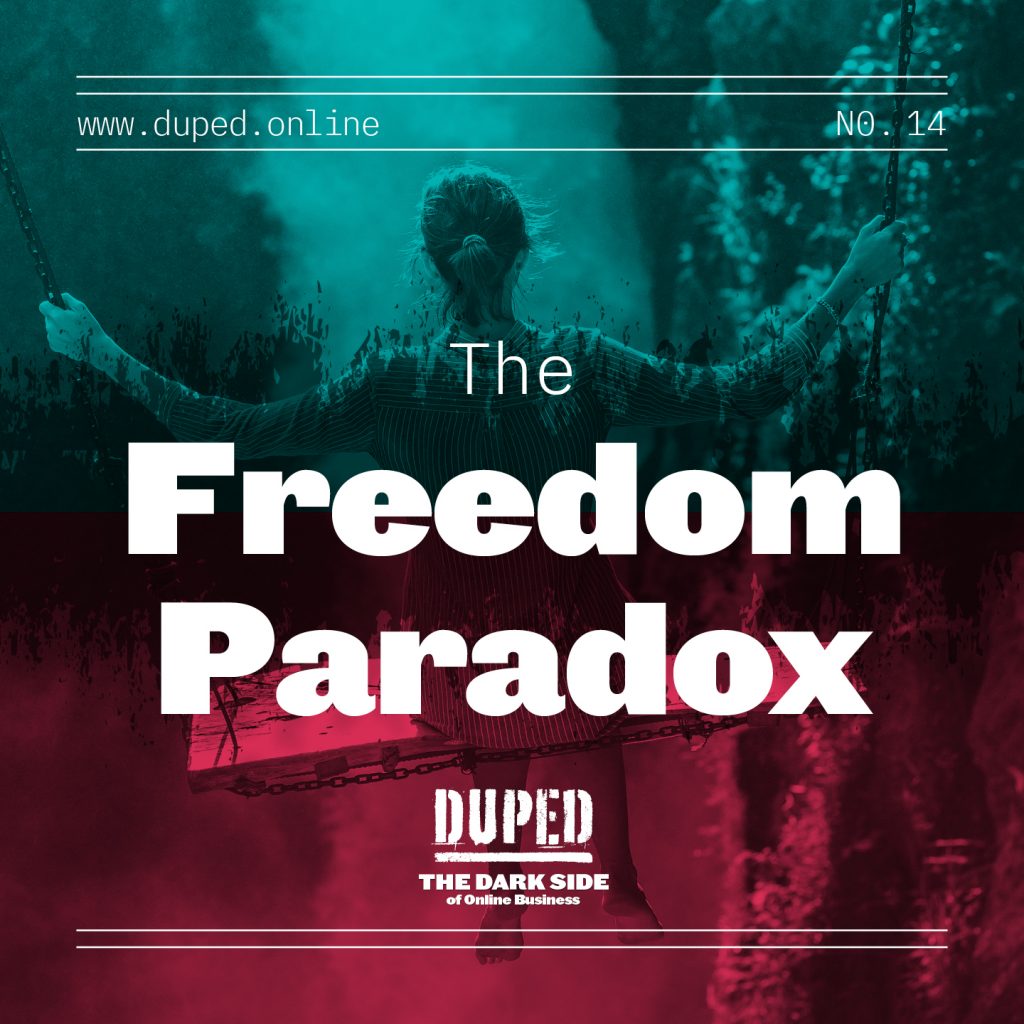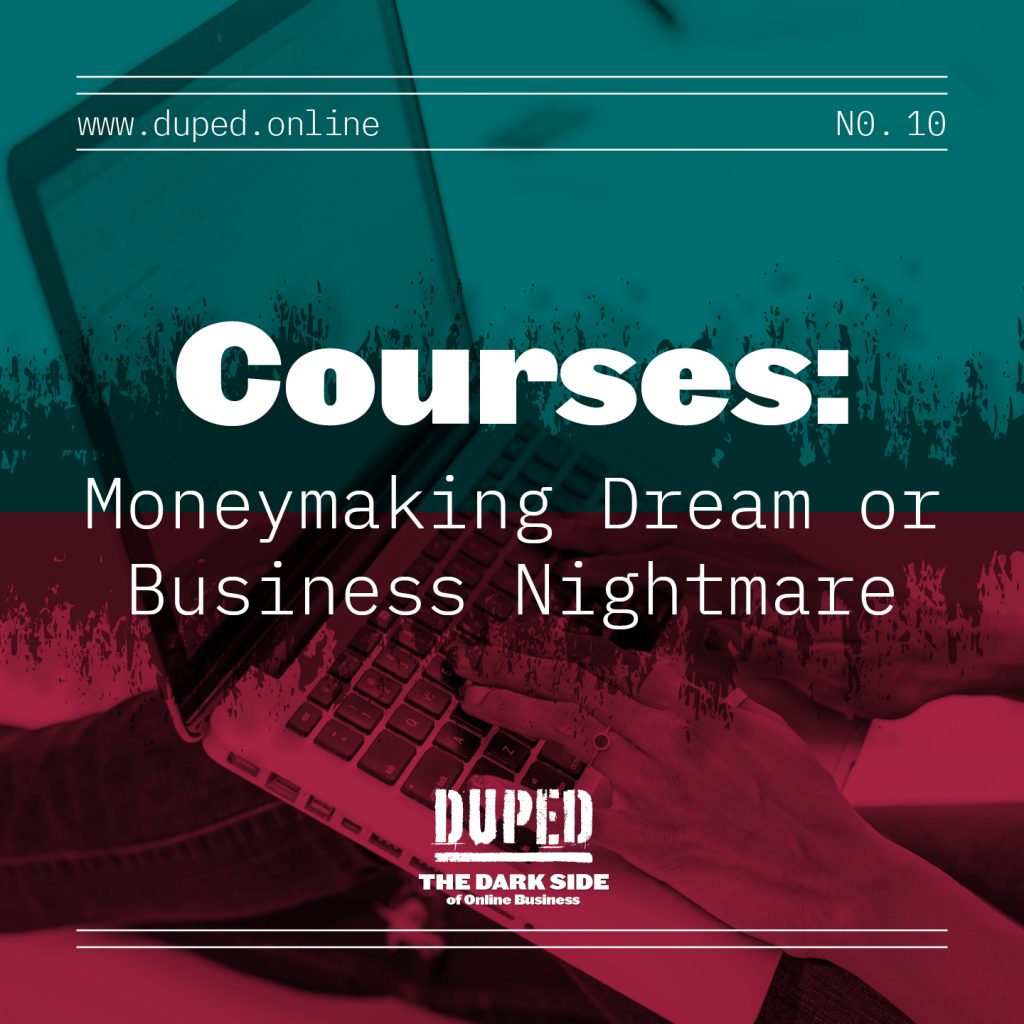
Courses: Moneymaking Dream or Business Nightmare?
Create it once, set it on autopilot and make money while you sleep with a course. You’ll never have to trade dollars for hours again. These are just some of the many promises celebrity entrepreneurs make to get you to enroll in their course that teaches you to create a course.
But do courses live up to the hype? Find out in this episode of Duped.

The Course Myth
When a client comes to you and says I’m going to scale with a course or membership site, what’s the first thing you say?
Courses are often billed as:
- The way service-based business owners can expand their capacity and scale
- The path for corporate peeps to make their side hustle a full-time gig
- The way for budding entrepreneurs to create more freedom and stop trading time for money.
Those who sell course creation programs and products often sell the dream hard by saying things like:
- No audience. No problem. You can still make bank with courses even with a tiny audience
- You create your course once and set it on autopilot and make money in your sleep
- They are the ONLY way to scale your business. If you don’t have a course, you’ll hit a revenue ceiling selling your services.
But is that all true?
Let’s dig in around these claims and look at the good, the math, and the bad of online courses so you can avoid being Duped.
The Good
We don’t want to make this whole episode about the horrors of courses. There’s nothing wrong with courses or wanting to create a course.
Our objection is around how they are marketed and sold as this panacea that will give you ultimate freedom.
Courses can be the best way to deliver information to your clients.
Have you ever taken a course that you really liked and felt like it delivered the goods? What made that course excellent?
For us, those courses were delivering a specific skill, each module had a specific learning objective with a specific action.
According to a survey from Terrain (an online learning platform):
- “Over 90% of entrepreneurs who bought a course that cost $100 reported that they felt satisfied with the value they got out of it.
- On the other hand, satisfaction levels were lower (at 73%) for users who invested more than $1000 on a course.”
Courses, especially at a lower price point, can be very valuable to your clients but students expect more from higher price courses (which make sense).
The Bad of Courses
Now let’s look at some of the not-so-great aspects of courses.
Courses Are the Way to SCALE (But Are They?)
We need to talk about how the online business world doesn’t understand what scale actually is and conflates growth with scale.
Lighter Capital, a start-up financier, explains what the difference is:
- “When companies grow, they are increasing their revenue equally as fast as they are adding resources to enable that increase”
- “When companies scale, on the other hand, they add revenue at a faster rate than they take on new costs”
When companies scale they are being MORE efficient while increasing their revenue without increasing expenses. Whereas growth you’re increasing revenue but your expenses also increase.
Courses are about growth but not scale. Courses have a host of other expenses associated with them
You don’t need a course to increase your revenue.
What are some ways to increase revenue?
- Group programs
- Masterminds
- Agency
- Increasing price
- Decreasing expenses
Completion Rate/Course Design
Courses are promised to be the way to make more impact, make a bigger difference in people’s lives but that assumes that you actually COMPLETE the course.
Data is not available for the completion rates of online business courses sold by celebrity entrepreneurs.
The best comparable data is available from studies that looked at MOOCs which are Massive Open Online Courses hosted by Coursera, Stanford, and MIT.
According to Katy Jordan who compiled the MOOC completion databases found that completion rates are between 5%-15%. The best courses top out at 40%
Now these courses are designed by people who are experts in course design and the science of learning – and the completion rates are abysmal
Most online business owners don’t know how to design a course to get a result or to optimize completion.
Transformational Experiences
We wanted to touch on this briefly because we know a lot of our audience does deeply transformational work with their clients.
Our best experiences in courses were teaching a super-specific skill like Instagram or a specific social media strategy. Mindset courses felt shallow to us because we didn’t get the support we needed.
Courses Are Not Really “Passive”
Creating and running a course is a lot of work. Course creators promise you freedom and to help you stop trading dollars for hours. But do they?
When you have a course, you’re creating a different kind of position for yourself in your business:
- Content creator to grow your audience
- Ad strategist
- Customer service
- Updating the course to provide a better learning experience
If you outsource that, you’ve increased your overhead and have to sell more to pay yourself. And even if you outsource most of that, you still have to manage the team or manage the person who manages the team.
Business is not a “money for nothing” endeavor. There’s always some kind of work to do to make the business work.
The question to ask yourself is what kind of business do you want to run? What do you want your job to be in that business?
The Math
Whenever a client tells Michelle they want to create a course and sell a course, the first thing she does is take them through the math.
- How much money do they want to take home every year?
- How much is the course?
- How many of the courses they need to sell to reach that?
Based on those three questions, we can figure out how big her audience needs to be
Let’s say a client wants to pay herself $100K. Using Profit First as our guide where OP is 50% of gross revenue, the gross revenue needs to be $200K.
For the sake of easy math, let’s say her course sells for $1000.
That means she needs to sell 200 courses a year to make that money.
Now, here’s the rub – the well known dirty secret of the online industry that most courses convert at 1-3%
If you have 100 people on your list, you can expect 1-3 people to buy your course. For every 100 people on your list 1 to 3 people will buy your course.
If you need to sell 200 courses you need to have 20,000 people on the email list for a 1% conversion rate or 6,170 for a 3% conversion rate.
You need a big audience to reach your goal and you’ll always have to keep growing that audience. The no audience – no problem myth is a lie.
There are exceptions to this. If you have an incredibly well-defined niche where no one is offering a solution. For example, Michelle’s client Annie Frisbie is a lactation consultant and she has a business toolkit for other lactation consultants and it sells really well because it’s the only thing that’s offered in her industry.
What Should You Ask Yourself to Decide if the Course Dream is Your Dream?
It’s your decision. Like everything we talk about on Duped, there’s so much nuance. Courses are neither good nor bad but you have to decide what kind of business you want.
- What’s your revenue goal and how much do you want to pay yourself?
- What job do you want to have in your business?
- Are you delivering a deeply transformational experience? Is this the best way to deliver a deeply transformational experience?
- How do you like working with clients?
Links for this episode:
Join the

Patreon

for only $7/month and get a
monthly bonus episode,
behind-the-scenes content
and more.
